- Home
- slideshows
- miscellaneous
- Before-and-after photos reveal how landmarks have been ravaged by fires, floods, and melting ice over the last decade
Before-and-after photos reveal how landmarks have been ravaged by fires, floods, and melting ice over the last decade
The Statue of Liberty rests on a 154-foot-tall pedestal, but it's not entirely safe from flooding.

Hurricane Sandy caused significant damage to Liberty Island's pier, railings, and infrastructure.
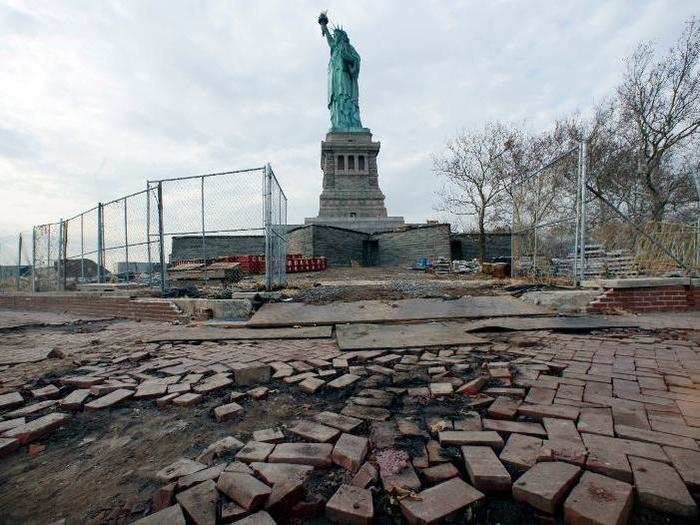
Before Hurricane Sandy struck in 2012, the statue had only sustained damage from one other event: a munitions explosion during World War I.
Lady Liberty managed to avoid damage from the storm due to her height, but the hurricane flooded around 75% of Liberty Island. By 2100, the average high tide could be 2 feet higher than the flood level caused by Hurricane Sandy, routinely placing the island underwater.
Skara Brae, a stone settlement in Scotland, is older than Stonehenge or the Egyptian Pyramids. It was rediscovered thanks to a storm, but another storm could destroy the site.
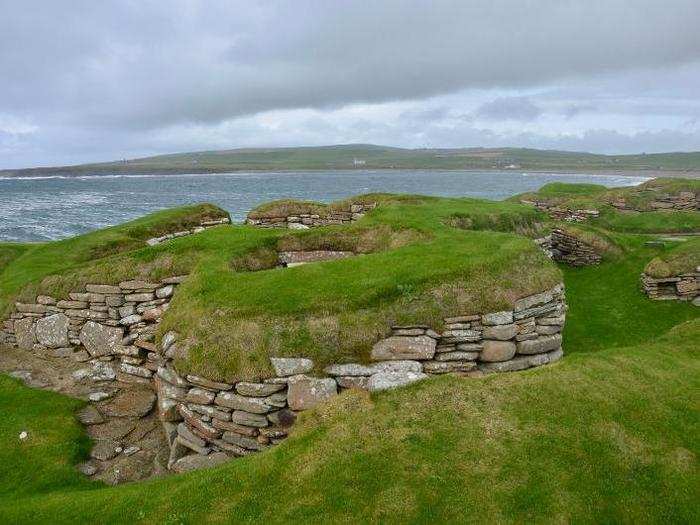
Skara Brae hosted its first inhabitants more than 5,000 years ago. It sits on the Orkney Islands, just a few miles from the coast of Scotland.
Researchers believe the settlement was abandoned after the local climate grew colder and wetter around 2500 BC. The site was discovered by archaeologists in 1850, when a storm peeled away a sand dune that had covered it for millennia.
Skara Brae is exposed to heavy rains and frequent storms. The land is also eroding due to sea-level rise.
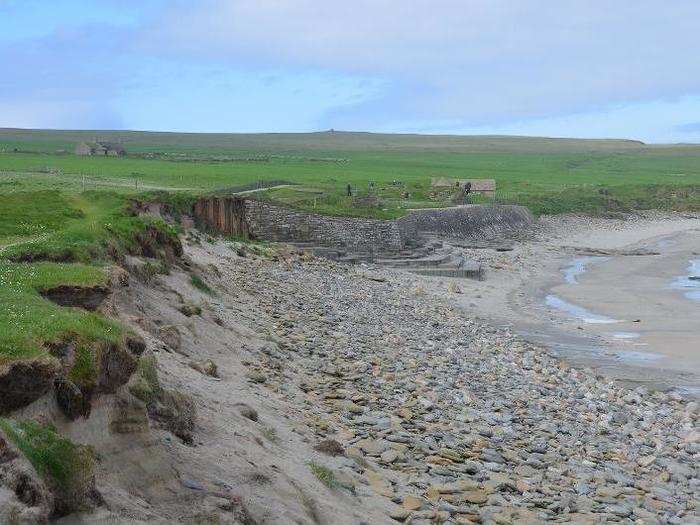
Sea levels near the Orkney Islands rose about 3 millimeters per year from 1992 to 2013. The area also witnesses frequent and intense storms. From 1961 and 2004, the number of days with heavy rains rose by about 8%.
After evaluating these conditions, a coalition of scientists recently determined that climate change poses a "physical threat" to the landmark. They also warned that part of Skara Brae could be destroyed by a single climate-related disaster.
A civil rights memorial in Annapolis, Maryland, has only been around for two decades, but it has already been flooded multiple times.
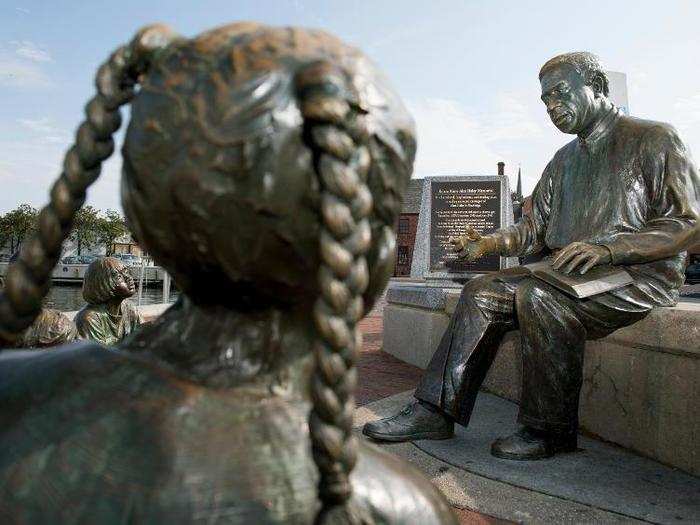
The memorial opened in 1999. It depicts author Alex Haley reading his novel, "Roots," to three children. The novel's main character, Kunta Kinte, is based on one of Haley's ancestors who was enslaved and brought to America.
Like Liberty Island, the memorial was inundated by floodwater from Hurricane Sandy in 2012.
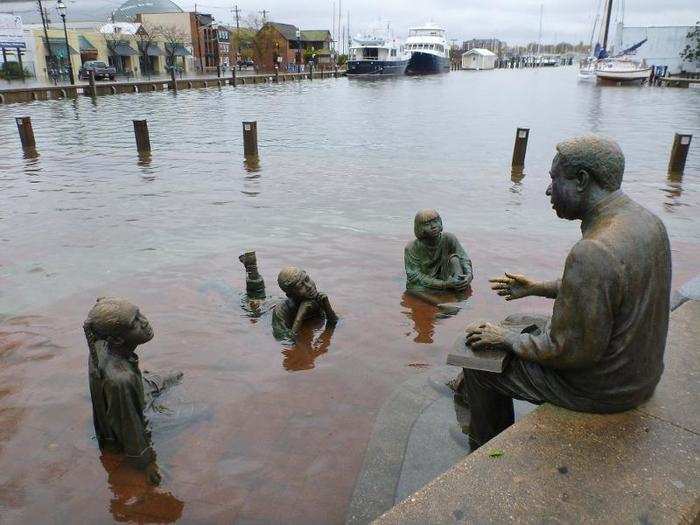
Flooding from the hurricane made the statues appear as if they were floating in water. A local newspaper, the Capital Gazette, called the memorial "the unofficial yardstick for flooding" in Annapolis Harbor.
St. Mark's Square in Venice has seen plenty of flooding over the last century, but the floods have become more frequent.
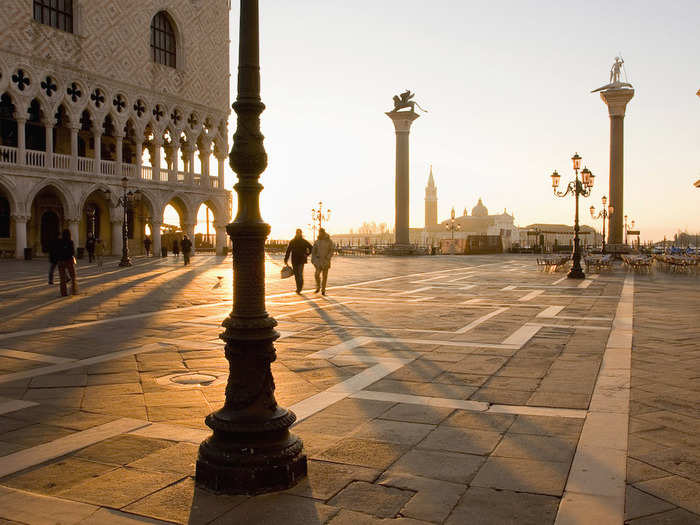
Since the site rests just above sea level, it's especially vulnerable to flooding during the "acqua alta" — a period of exceptionally high tides in the Adriatic Sea that lasts from autumn to spring.
Venice now floods more than 60 times per year and is on track to be underwater by 2100.
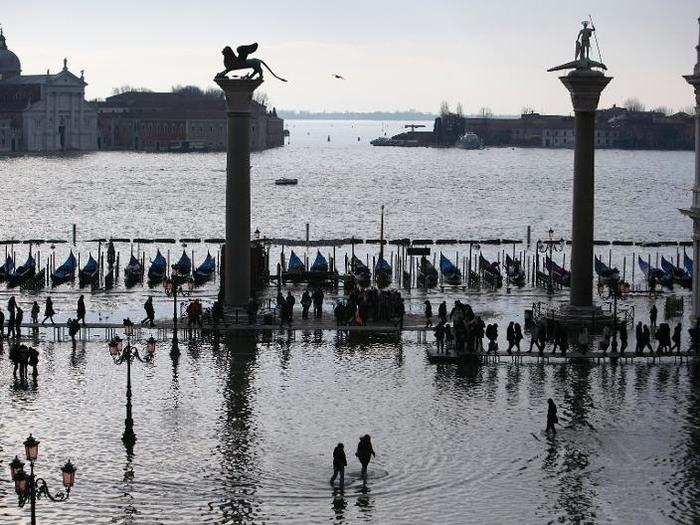
In 2018, a series of devastating storms toppled trees and flooded tourist attractions like St. Mark's Square. By the end of the storm, at least 11 people were dead and three-quarters of Venice city was submerged.
During the last Ice Age, giant glaciers carved out mountains in Glacier National Park in Montana. But now only a small fraction of the park's glaciers remain.
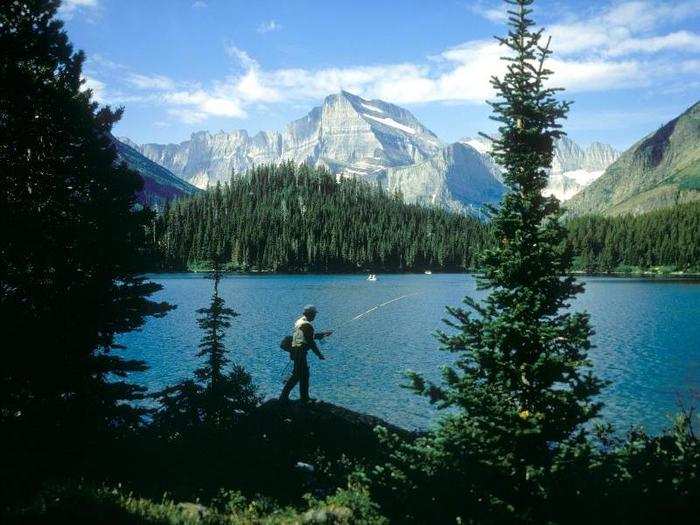
Around 150 glaciers existed in Glacier National Park in 1870. Only 26 are still there.
Even the glaciers that do remain in the park have shrunk.
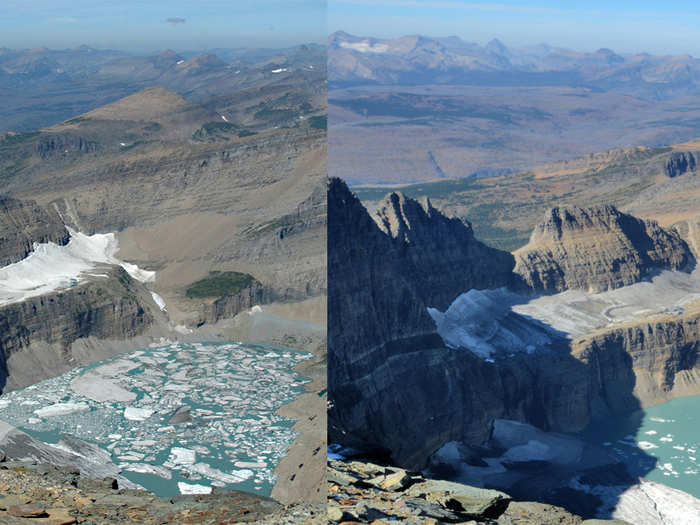
The park's Grinnell Glacier shrunk by 72% from 1850 to 2015. About 8% of this decline in mass occurred from 2005 to 2015.
Glacier National Park has also been hit by wildfires as fire season grows longer in the western US. In 2018, the Howe Ridge Fire tore through the park's forest.
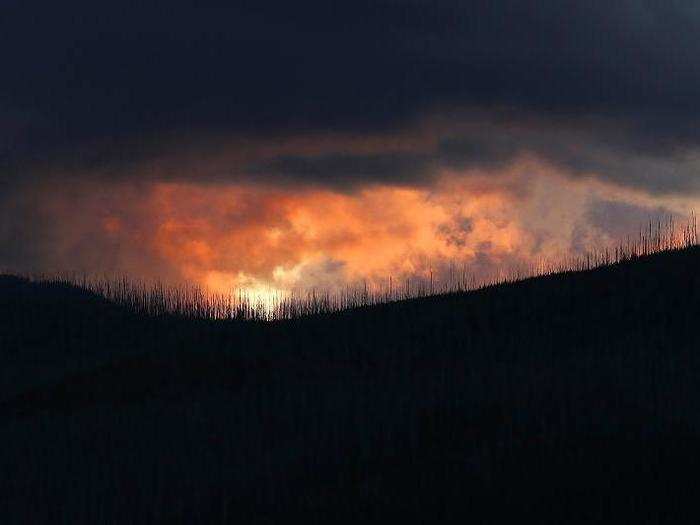
A thunderstorm on August 11, 2018 ignited the blaze, which burned through 14,5000 acres.
The Montana's 2017 Climate Assessment found that the state's annual forest fire season is nearly three times longer than it was in the mid-1970s. It now lasts for around 135 days.
Yellowstone was the first national park ever established. But its forests, like those in Glacier National Park, are threatened by wildfires.
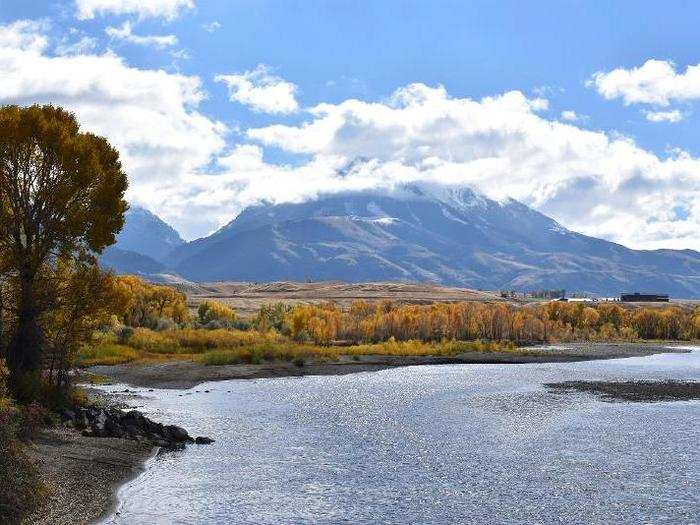
The average annual temperature around Yellowstone has risen by about 2 degrees Fahrenheit since 1948. Local winters are also about 10 days shorter than they were then. Warmer, drier conditions make the land more vulnerable to wildfires.
The park has seen nine wildfires this year alone.

In 2016, it saw a total of 22 wildfires.
Iconic glaciers elsewhere in the world are at risk, too. The Aletsch Glacier is the largest glacier in the Swiss Alps. But that could change in the coming years.
The glacier stretches about 32 square miles, but it could lose up to 90% of its ice by 2100.
The glacier's "tongue" has already shrunk by 3,300 feet in the last two decades.
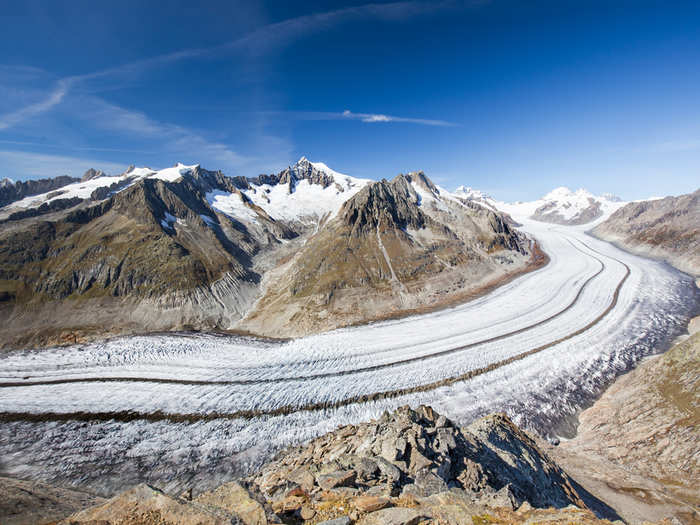
Researchers at the Swiss Federal Institute of Technology in Zurich predict that, if local temperatures increase by between 4 and 8 degrees Celsius by 2100, all that will be left is a patch of ice. (The World Meteorological Organization predicts an average temperature rise of 3 to 5 degrees Celsius globally by 2100. )
The Great Barrier Reef is known for its colorful medley of coral. But in 2016, around 30% of that coral was killed in a bleaching event.

The Great Barrier Reef consists of more than 2,500 individual reefs, all of which are threatened by rising ocean temperatures.
Coral reefs have microscopic algae living in their tissue, which capture sunlight and turn it into nutrients for the reef. When ocean water gets too warm, algae either leaves the coral tissue or dies inside of it.
Without that algae, coral becomes pale or white (the color of their exoskeletons) — a process known as "bleaching." The coral may eventually attract more algae if water temperatures return to normal, but its likelihood of survival drops as algae leaves the nest.
Projections suggest that 60% of all coral reefs are likely to be highly or critically threatened by 2030.
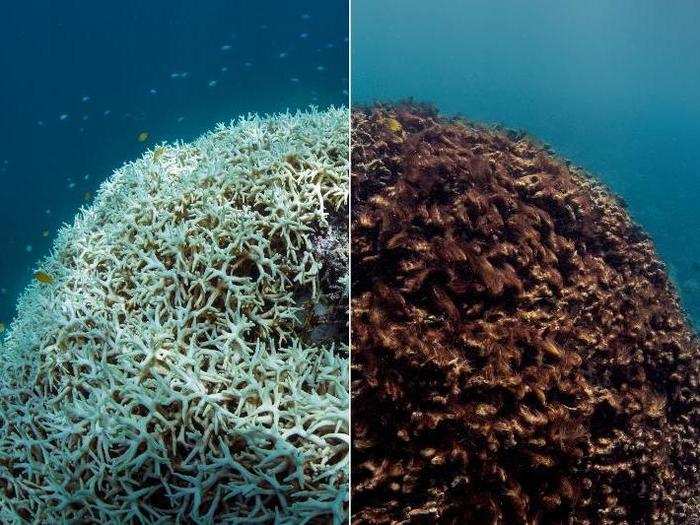
A quarter of all fish species spend a portion of their life cycle in reefs, so coral bleaching can leave them without an important source of food and shelter.
Drought conditions have caused the Dead Sea, which borders Jordan, Israel, and Palestine, to shrink and collapse.
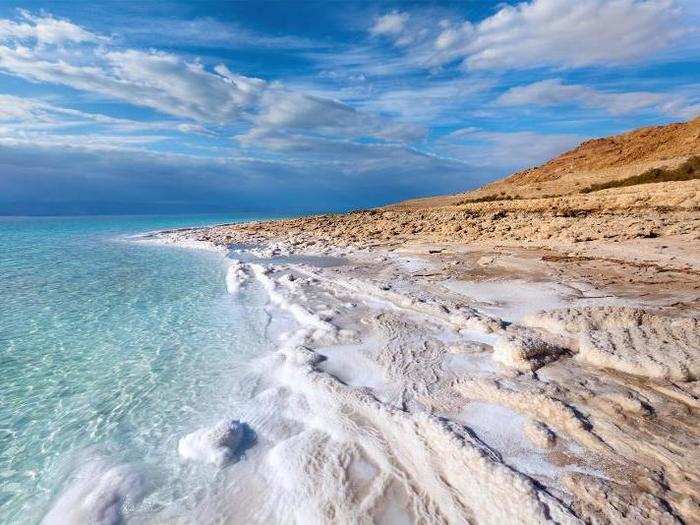
The area is known for its warm, dry climate, which causes water to evaporate quickly, making the Dead Sea one of the saltiest bodies of water on Earth. As the Dead Sea, it leaves behind salt deposits that can collapse into sinkholes, forming craters in the ground.
The land around the Dead Sea now has around 5,500 sinkholes near the shoreline — all of which have appeared in the last 40 years.
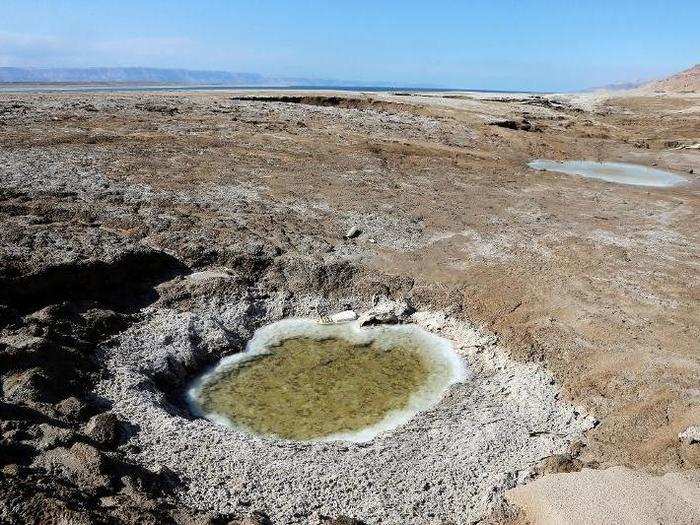
The Dead Sea sits about 1,400 feet below sea level, making it the lowest point on land. The sea's surface level is dropping at a rate of about 4 feet per year.
Popular Right Now
Popular Keywords
Advertisement